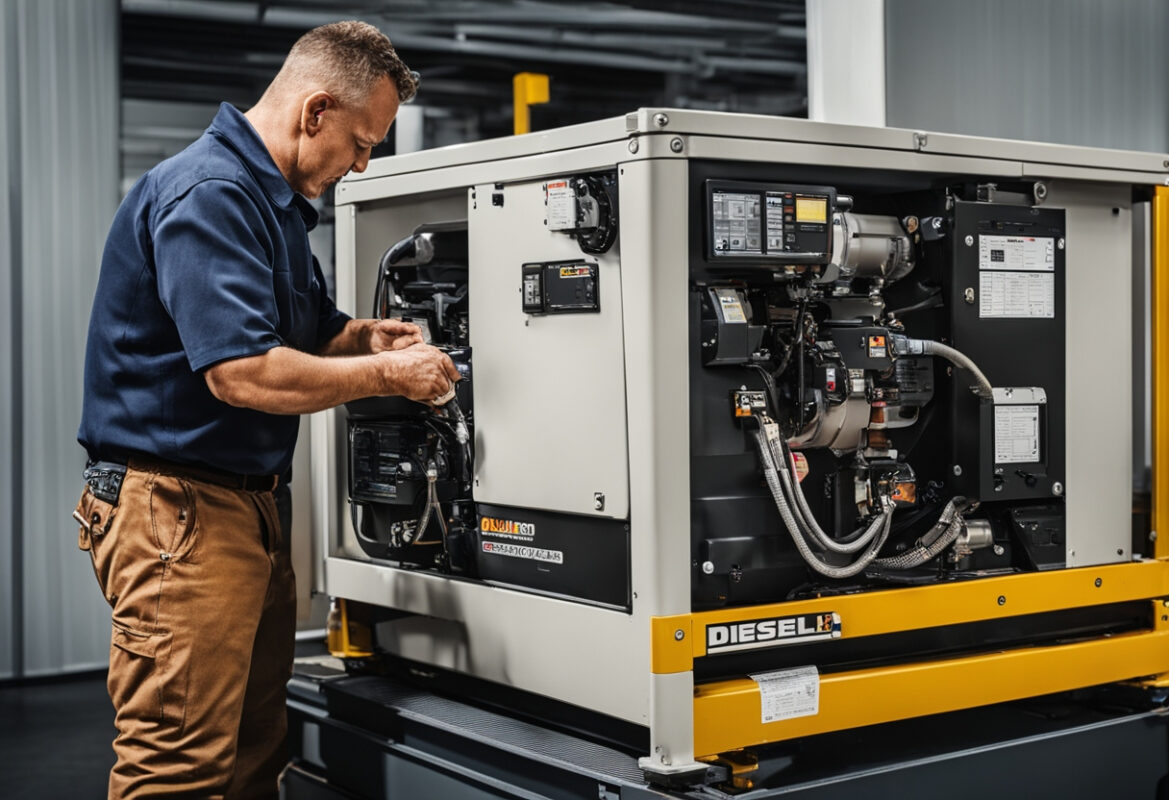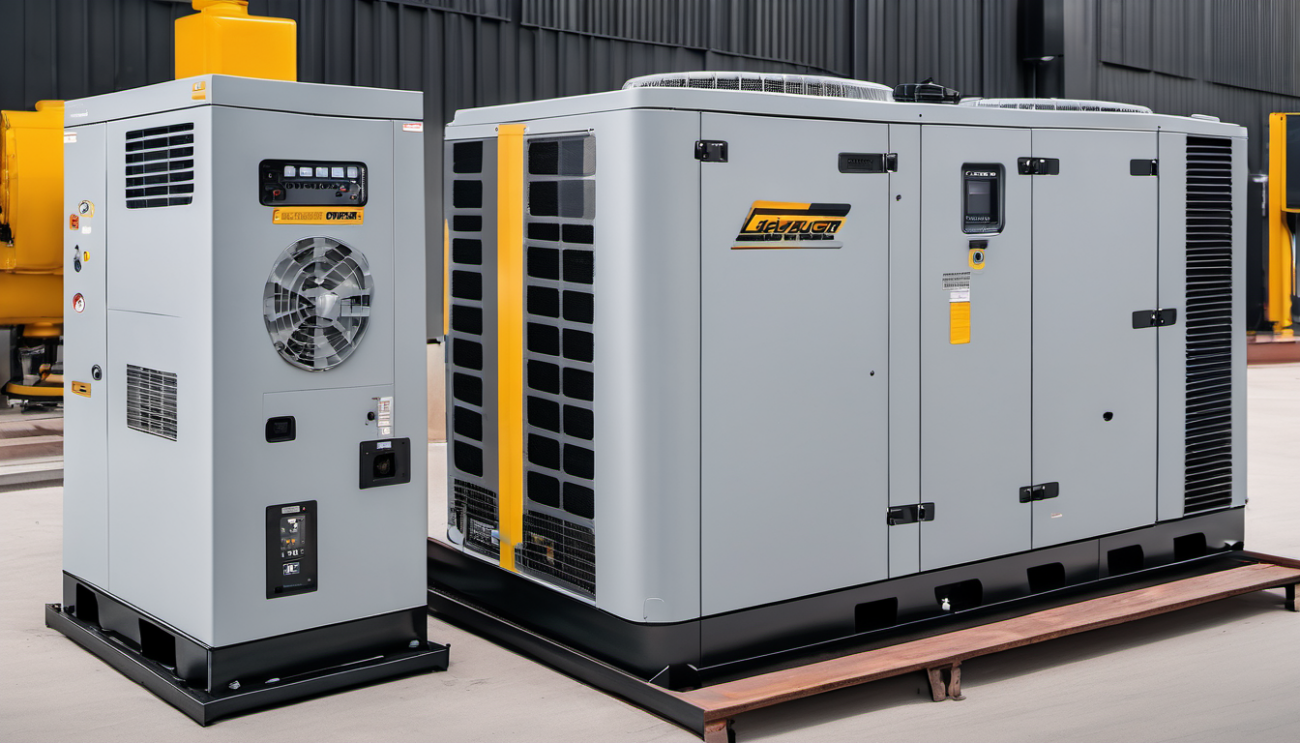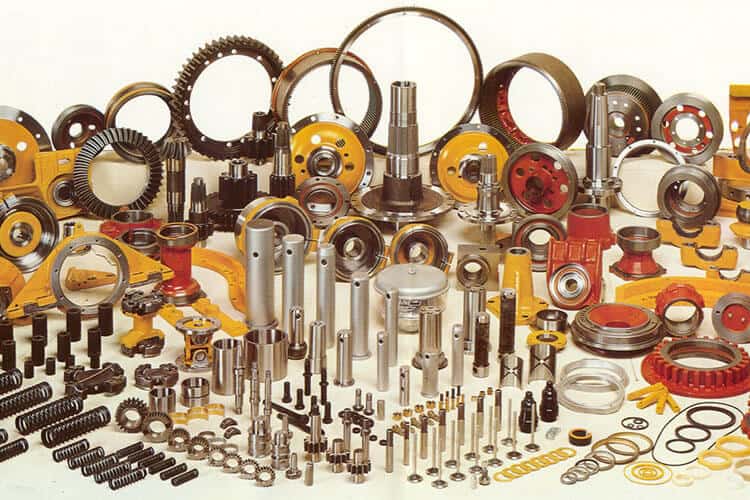Generators provide reliable power during outages or in areas without grid access, such as remote worksites. This article provides you with a comprehensive guide to generator ratings to help you choose one that meets your power needs. Genset ratings guide you in selecting the right generator. Ratings like eKW and kVA show the generator’s power output, helping you decide if it can handle your operations’ load.
What Is kVA?
The kVA rating measures apparent power, which includes both real and reactive power. It tells you the total power the generator can supply for various tasks. Reactive power isn’t consumed but cycles between the load and the power source.
A higher kVA rating means more power output. To calculate kVA, multiply voltage by amps. You can also convert kVA to eKW by multiplying by the power factor, which depends on whether the generator is single-phase or three-phase.
What Is eKW?
The eKW rating, also called kWe, is the generator’s total electrical output after accounting for energy losses. It is typically measured in watts or kilowatts. Understanding the eKW is critical since it shows the actual power available to run equipment and appliances. If the eKW is too low, you may not have enough power to operate everything you need.
How Are Generators Rated?
Besides eKW and kVA, generators are rated based on other factors:
- Standby Power: This measures the generator’s ability to supply power during emergencies. It’s typically used for up to 500 hours or a year, depending on the model. Ensure the power factor does not exceed 0.7.
- Load Factor: The load factor shows how efficiently the generator uses electricity. Higher load factors mean better efficiency. It is calculated by multiplying the operating time at a specific load by the rated load.
- Continuous Power: This rating is for generators that provide constant power to a steady load. Output ranges between 70% and 100% of the rated capacity. Continuous power generators have no overload capacity and running them above the limit shortens engine life and raises maintenance costs.
- Prime Power: This rating reflects the generator’s capacity to power variable loads continuously. It can handle overloads up to 10%, but only once every 12 hours and not for more than 25 hours a year.
- Limited Time Power: This rating applies to generators that run in parallel with a utility for up to 500 hours annually. They do not have overload capacity.
Understanding these ratings helps you choose the best generator for your business. Knowing the differences allows you to make informed decisions.
What Rating Should You Consider?
To ensure your generator can meet your business’s peak power demands, you can use two methods:
- Determine Full Load Capacity:
-
- Measure Full Load Current: Attach ammeters to each leg of the electrical service and sum the readings to get the total amps.
- Convert Amps to kW: Divide amps by two for single-phase or by three for three-phase systems. Multiply the result by the supply voltage and 1,000 to find the total kW needed.
- Include Emergency Systems: Add the power needed for emergency systems, like lighting, to the total kW.
This method helps you calculate the generator’s full load capacity, ideal for businesses with variable power demands.
- Measure Square Footage:For simpler operations with consistent energy use, you can estimate generator size based on square footage.
- Start with a Baseline: Use 50 kW as a starting point.
- Add Power Based on Square Footage: For retail operations, add 10 kW per square foot; for commercial operations, add 5 kW per square foot. For example, if your business is 500 square feet, multiply 500 by 5 to get 2,500. Add 50 kW for a total of 2,550 kW.
This method provides a quick estimate for businesses with steady power needs. For more complex cases, consider consulting with us to find the most suitable generator for your specific needs.








